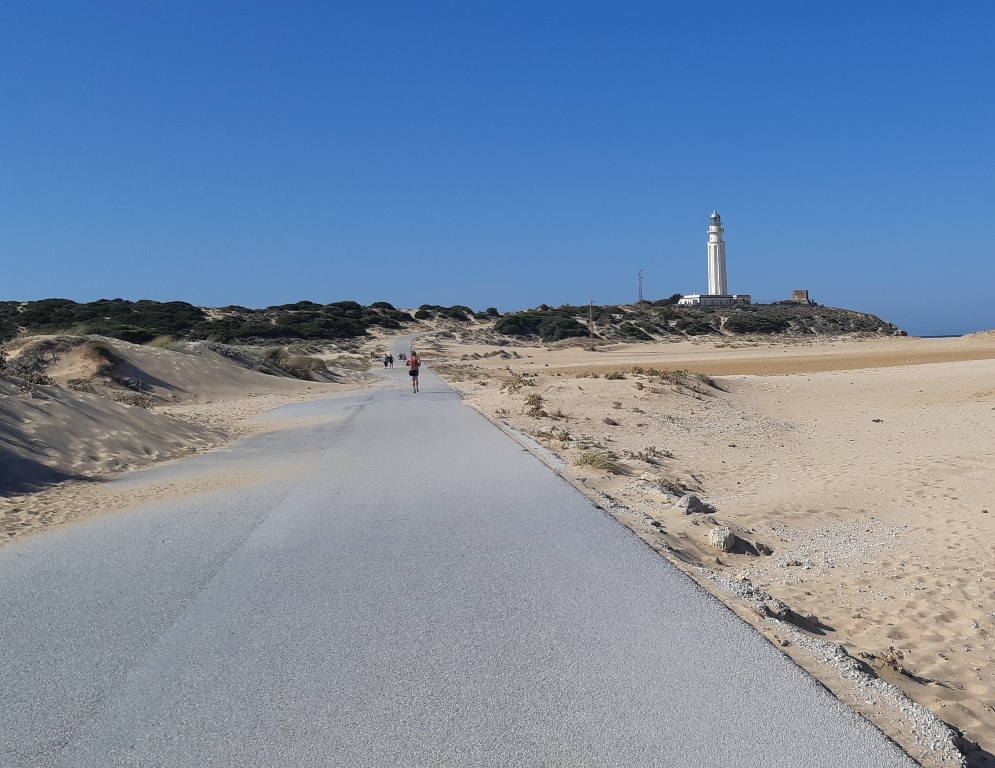Cape Trafalgar, October, just before midday, 1805.
The wind is light and north-north westerly. Standing on the headland, looking out to sea, we see the sails of over fifty ships in the distance. One line is racing back to safety in Cádiz harbour. Two others are bearing down on them from the west. They are sailing directly towards us here on the Cape. Suddenly, a flash flares from the midst of the line, followed seconds later by a loud boom, and the faintest cries carried to us on the onshore breeze. A great battle has begun.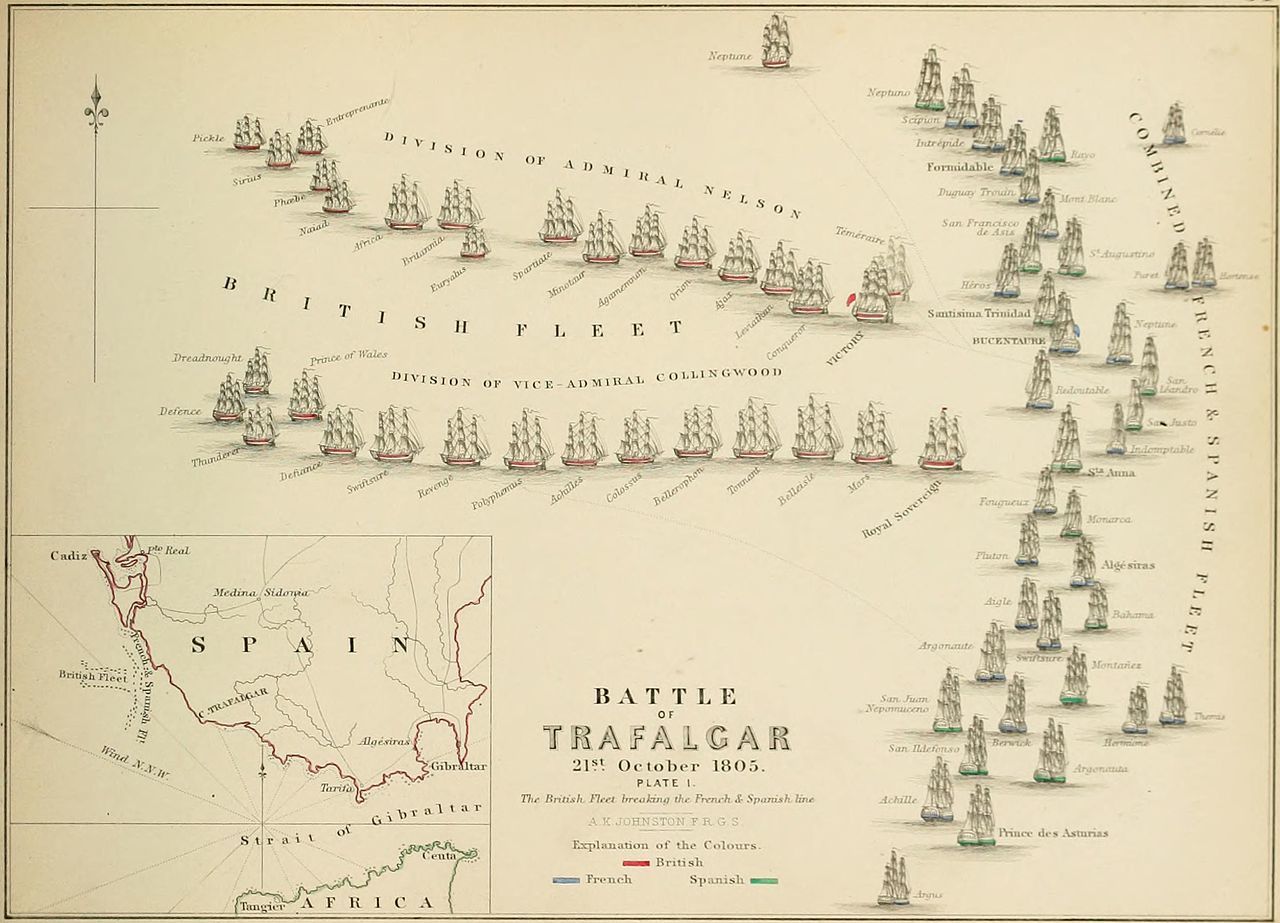
Battle of Trafalgar by AK Johnston (1848 - Atlas to Alison's History of Europe) - inset map shows position of fleet wrt Cape Trafalgar.
Cape Trafalgar, October, just before midday, but two hundred and thirteen years in the future.
I've no idea which direction the wind is coming from but it's a wicked onshore breeze, enough to have tempted dozens and dozens of daring kitesurfers into the bay. I'm visiting the famous site to see with my own eyes what it might have been like that day.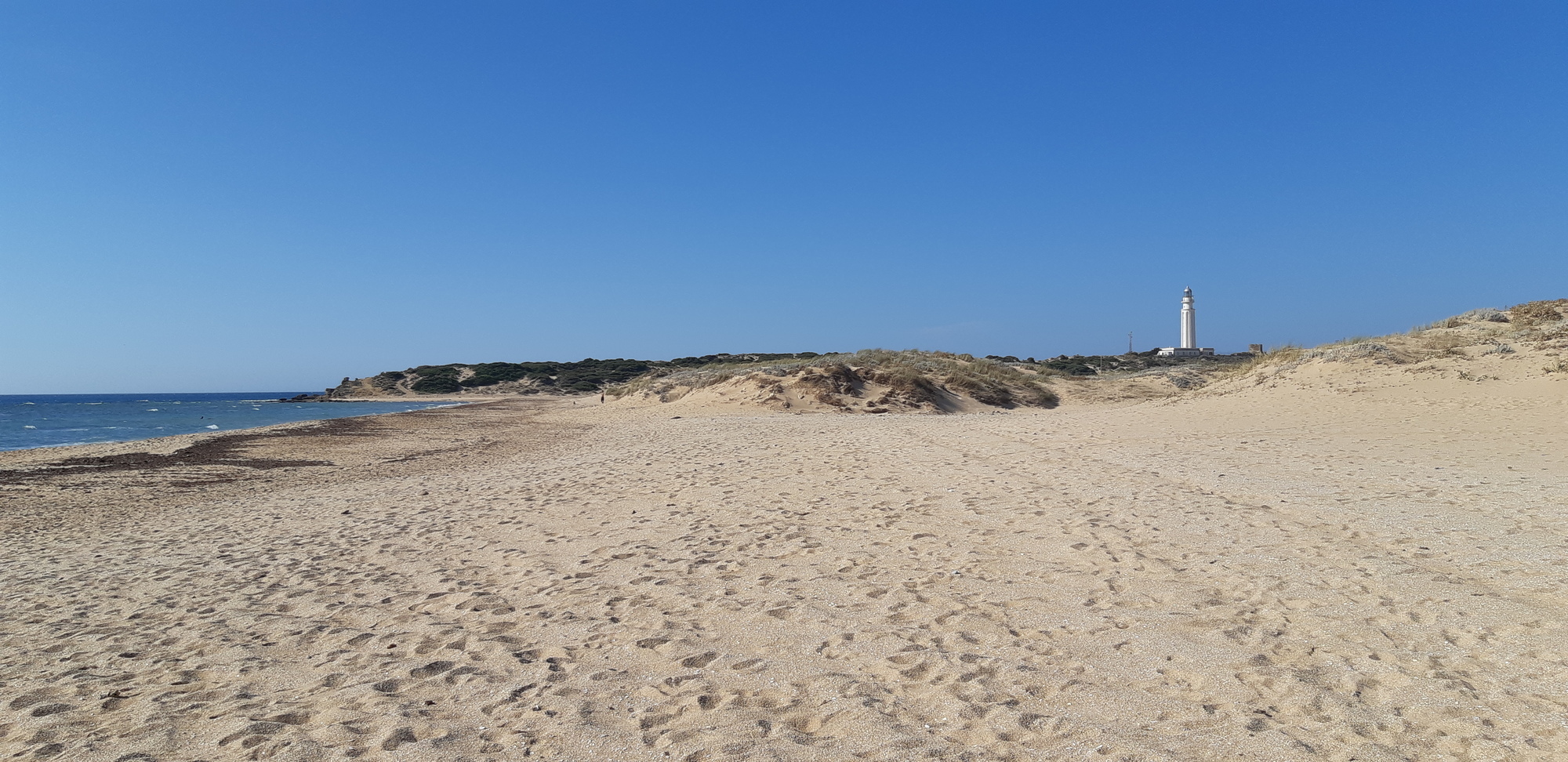
Cape Trafalgar © Kathy Brown
The cape is peaceful and sandy and feels remote; not quite what I expected if I'm honest. There is not very much here, and it's a little underwhelming as a cape. I had imagined ominous cliffs, a big pointy point, with a lighthouse looming high above sea level. This looks altogether more tame.
I'd thought there might be more here to mark the significance of the location. Some cafés and souvenir shops, a few hotels or villas maybe, monuments, statues, memorials... but there's only a snack bar and one rather nice taverna which caters for the cyclists, motorbikers, and the kitesurf crew. I instantly understand. Trafalgar, for the Spanish, isn't a cause for celebration, of course not. That day in October 1805 marked the loss of over a thousand of their men, with many more injured and some three to four thousand captured after defeat in a battle the Spanish never wanted to be part of in the first place.
There is a lighthouse. It's a white-painted beacon atop the small outcrop of rocks that marks the end of the headland. You can walk up to it along a gently rising access road.
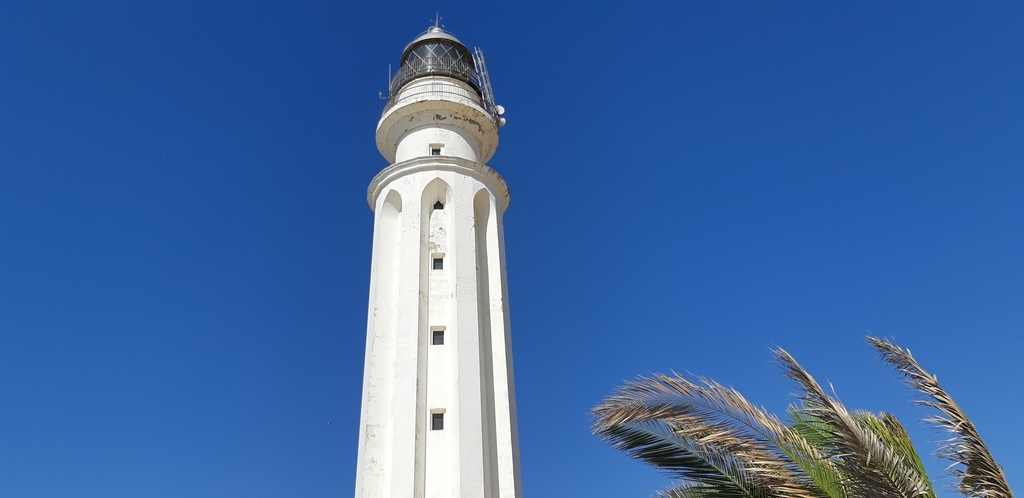
Faro de Trafalgar © Kathy Brown
This lighthouse was built in 1860, close to the former beacon tower. Seems this rocky headland has proven to be trouble to vessels following the coastline to and from the Straits of Gibraltar for many centuries. A sailing navigation book from 1845 describes the cape as follows:

You can see how, without a lighthouse or beacon, this low-lying spur of rocks would prove treacherous to a navigator distracted by the higher hills behind, to the east. There are many 'shoals' described along this coast here: the shoal of Conil, to the west, leaves only 2 to 3 fathoms at low tide, and closer in to Trafalgar, the Aceytera, a dangerous reef of rocks, leaves only 9 feet.
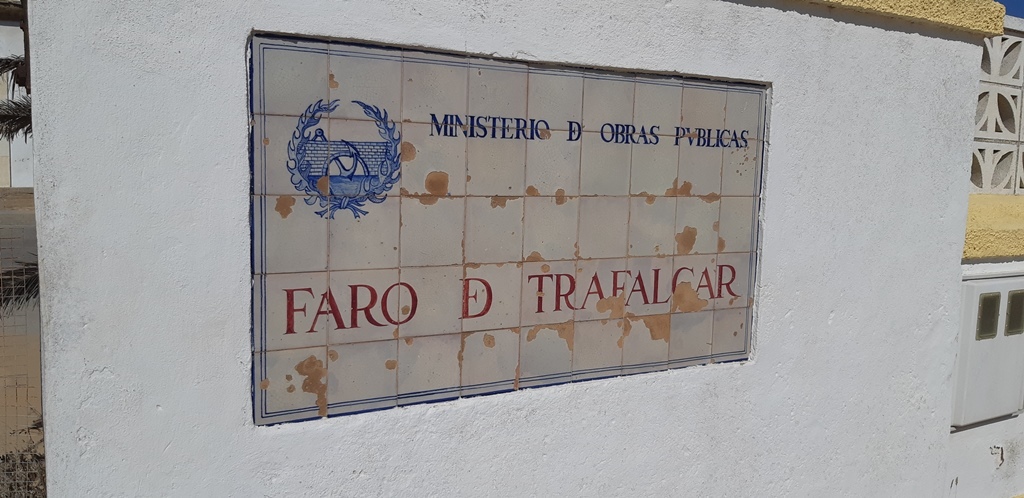
Faro de Trafalgar entrance sign © Kathy Brown
Today, the lighthouse is functional but there's not much to see here and you can't gain access. We take in the views, then scramble down to the lovely sandy beach, where terns are strutting on the low rocks at the water's edge.
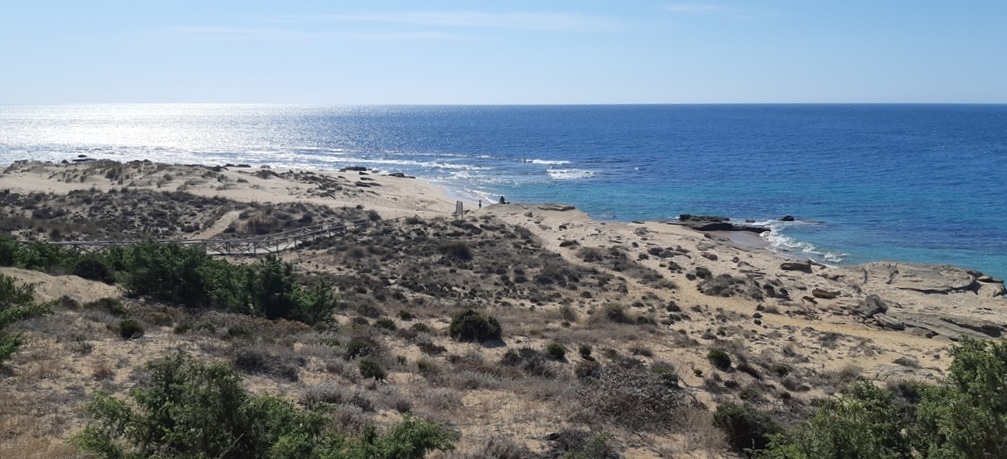
View to sea from Cape Trafalgar © Kathy Brown
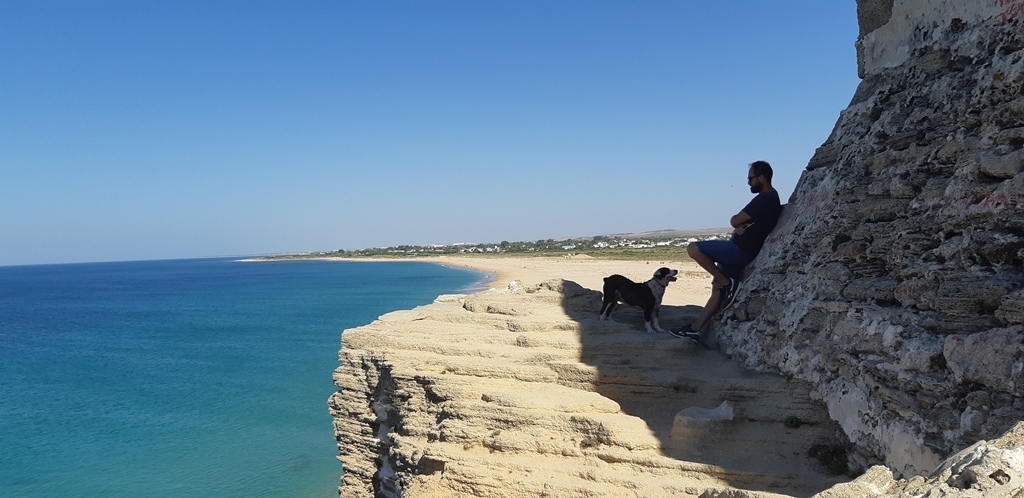
View towards Cadiz, from below the beacon tower © Kathy Brown
It's really very, very pleasant here. We remove our shoes to dip our feet in the chilly Atlantic, then wander back round towards the bay with the kitesurfers, and the road.
The memorial
There is just one memorial to the battle. A rock and plaque has been installed near the lighthouse.
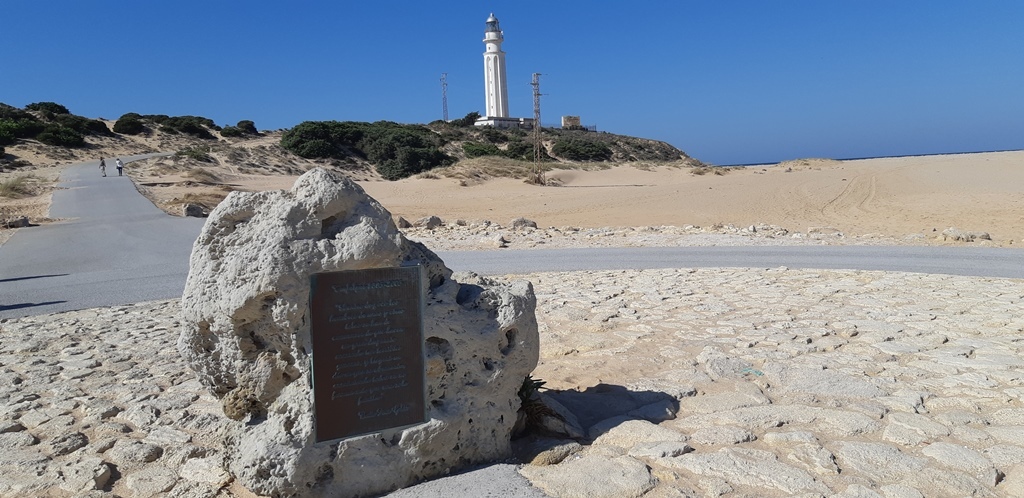
Nothing glorious about it, it contains an inscription in Spanish.
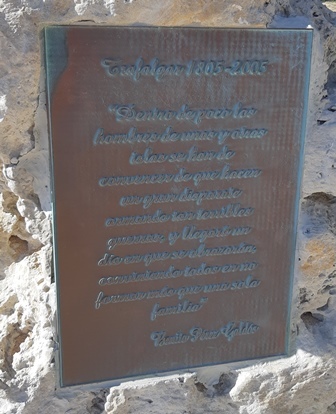
The inscription translates to something like:
Trafalgar 1805 - 2005
"Before long, men of both islands must convince themselves that it is a madness to make such terrible wars, and there will come a day when they will embrace each other, all agreeing to form only one family. "
Benito Pérez Galdós
Galdós is a well-known Spanish novelist of the late 19th century. This quote is taken from his book, 'Trafalgar', which is available to buy and read in English, (eg see here). It was published in 1873, the first of a series of 'Episodios Nacionales', Galdós' great project - 46 episodes in Spanish history from Trafalgar to 1912, retold in fiction.
This minimal memorial is a reminder that when we celebrate Trafalgar as a great victory, we must also, as others did then, have done since and still do today, remember its toll.
On a beautiful, warm autumnal day like the one we are experiencing, Trafalgar is a magical place to rest a while and reflect as we look out to sea, and perhaps catch a little snooze on the sand. Those kitesurfers are really something, their sails like darting butterflies swooping across the bay from left to right and back again.

Kitesurfers swooping across the bay © Kathy Brown
Have you visited Cape Trafalgar either by land or by sea? We'd love to hear from you! Also, if you've read Trafalgar by Benito Pérez Galdós, a review would be welcome.





